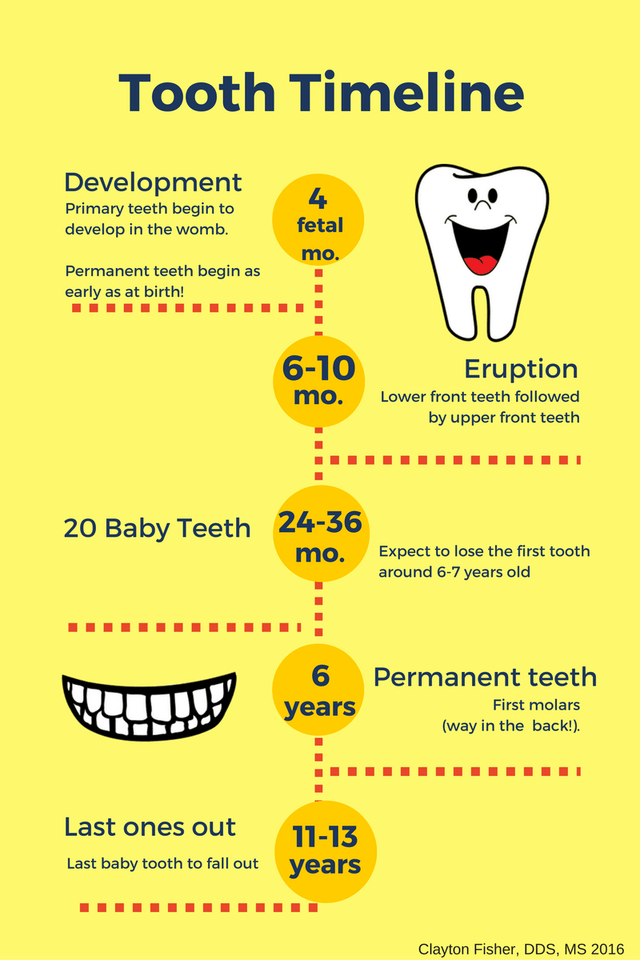
The tooth has two anatomical parts; the crown and the root.
The crown is the part of the tooth that is normally visible in the mouth. Enamel is the hard outer layer of the crown. Dentine is not as hard as enamel and forms the bulk of the tooth. It can be sensitive if the protection of the enamel is lost. Pulp is the soft tissue containing the blood and nerve supply of the tooth and enables sensations of tooth sensitivity or pain.
The root of a tooth is the part embedded in the jaw. It anchors the tooth in its bony socket and is normally not visible (below the gum line). Finally, Cementum is the layer of bone-like tissue covering the root. It is not as hard as enamel.
Structures around the tooth include the periodontal ligament, which is responsible for attaching the tooth to the jaw bone. The soft tissue that immediately surrounds the teeth and bone is the Gingiva. The alveolar bone provides a socket to surround and support the roots of the teeth.
दाँत के हिस्से हैं, मुकुट और जड़|
मुकुट दांत का वह भाग है जो आमतौर पर मुंह में दिखाई देता है| इनेमल मुकुट की सब से बाहरी परत है। डेंटाइन इनेमल के समान कठोर नहीं है और दांतों के मुख्य भाग को बनाता है।
एक दांत की जड़ जबड़े में एम्बेडेड भाग होती है। यह दांत को अपने बोनी सॉकेट में डालती है और सामान्य रूप से दिखाई नहीं देती (गम लाइन के नीचे)।
दांत के चारों ओर संरचनाओं में पीरियडोंटल लिगामेंट शामिल होता है, जो दांत को जबड़े की हड्डी से जोड़ने के लिए जिम्मेदार होता है। नरम ऊतक जो दांतों और हड्डी को तुरंत घेर लेता है, वह है जिंजीवा।
Video / वीडियो # 1
The permanent teeth are 32 in number. The permanent central incisors, lateral incisors and canines replace the primary incisors and canines respectively. The primary molars are replaced by permanent premolars, and the permanent molars erupt posterior to them. The functions of the different teeth are as follows-
-
The Incisors are the four front teeth in both the upper and lower jaws. Their primary function is to cut food.
-
Canines, also called cuspids, are teeth used for ripping and tearing at foods that might be tough, such as meat. You have a total of four of them, located next to your four top front teeth and your four bottom teeth.
-
Premolars, or bicuspids, are used for chewing and grinding food. Adults have four premolars on each side of their mouths — two on the upper and two on the lower jaw.
-
Molars are also used for chewing and grinding food.
Types of Permanent Teeth
स्थायी दांतों की संख्या 32 होती है। अलग-अलग दांतों के कार्य निम्नानुसार हैं-
-
इंसाइजर ऊपरी और निचले जबड़े दोनों में चार सामने वाले दांत हैं। उनका प्राथमिक कार्य भोजन को काटना है।
-
कनाइन, जिसे पुच्छल भी कहा जाता है, का उपयोग खाद्य पदार्थों को फाड़ने के लिए किया जाता है जो मांस जैसे कठोर हो सकते हैं।
-
आपके चार नीचे के दाँत प्रीमोलर्स, भोजन चबाने और पीसने के लिए उपयोग किए जाते हैं।
-
मोलर्स का उपयोग भोजन को चबाने और पीसने के लिए किया जाता है|
Video / वीडियो # 2
Deciduous teeth, commonly known as milk teeth, or temporary teeth, are the first set of teeth in the growth and development of human beings. The permanent teeth replace the milk teeth.


पर्णपाती दांत, जिन्हें आमतौर पर दूध के दांत या अस्थायी दांत के रूप में जाना जाता है, मनुष्य के विकास में दांतों का पहला सेट है। स्थायी दांत दूध के दांतों की जगह लेते हैं।
Video / वीडियो # 3
Oral Health includes the health of the teeth, gums, ligaments, muscles, tongue, salivary glands and jaw bones. Oral diseases lead to loss of precious man hours and cause debilitating pain. Treatment of dental diseases is time consuming and expensive, as compared to prevention. Periodontal disease has been linked to increased chances of Strokes, Diabetes, Pneumonia, digestive and heart problems.


मौखिक स्वास्थ्य दांतों, मसूड़ों, स्नायुबंधन, मांसपेशियों, जीभ, लारग्रंथियों और जबड़े की हड्डियों के स्वास्थ्य का संकेत देता है। मौखिक रोगों से अनमोल समय का नुकसान होता है और यह दुर्बल दर्द का कारण बनता है। दंत रोगों का उपचार रोकथाम के मुकाबले समय लेने वाला और महंगा है। पेरियोडोंटल बीमारी को स्ट्रोक, डायबिटीज, निमोनिया, पाचन और दिल की समस्याओं की बढ़ी हुई संभावनाओं से जोड़ा गया है।


Video / वीडियो # 4
The four main types of oral diseases are:-
-
Dental Caries or decayed teeth, which affect 80 percent of the population
-
Gum Disease or swollen gums, which affects nearly 90 percent people
-
Malocclusion or malaligned teeth, which affects 30 percent of all children and
-
Oral Cancer which constitutes 40 percent of all malignancies
Dental Caries Gum Disease
Malocclusion Oral Cancer
चार मुख्य प्रकार के मौखिक रोग हैं:
-
दंत क्षय या क्षय वाले दांत, जो 80 प्रतिशत जनसंख्या को प्रभावित करते हैं|
-
मसूड़े की बीमारी या सूजे हुए मसूड़े, जो लगभग 90 प्रतिशत लोगों को प्रभावित करते हैं|
-
या कुरूप दांत, जो सभी बच्चों का 30 प्रतिशत है।
-
मौखिक कैंसर जो सभी विकृतियों के 40 प्रतिशत का गठन करता है|
मसूड़े की बीमारी
कुरूप दांत मौखिक कैंसर